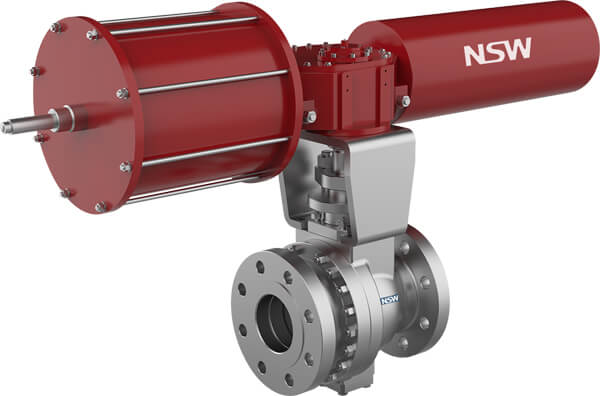The top 10 suppliers of shut down valves include the following well-known companies
Emerson, USA:
Fisher brand under Emerson focuses on process control valves, which are widely used in oil, gas, chemical and other fields.
Schlumberger, USA:
Cameron under Schlumberger provides valves and wellhead equipment for the oil and gas industry.
Flowserve, USA:
Provides a variety of industrial valves, including control valves, ball valves, butterfly valves, etc., serving the energy, chemical and water treatment industries.
Tyco International, USA:
Its brand Tyco Valves & Controls provides valves for fire protection, industrial and commercial applications.
KITZ, Japan:
One of the largest valve manufacturers in Japan, with products covering industrial, construction and civil fields.
IMI, UK:
IMI Critical Engineering focuses on high-end industrial valves, serving the energy, power and chemical industries.
Crane, USA:
Its brand Crane ChemPharma & Energy provides valve solutions for the chemical, petrochemical and energy industries.
Velan, Canada:
Focuses on industrial valves, including gate valves, ball valves, butterfly valves, etc.
KSB, Germany:
Provides pump and valve solutions, widely used in water treatment, energy and industrial fields.
Weir Group, UK:
Its brand Weir Valves & Controls focuses on high-performance valves in the mining, power and oil and gas industries.
Tips: NSW Valve manufacturer is a well-known shutdown valve supplier in China. They have their own shutdown valve body factory and shutdown valve actuator factory. They can provide you with professional technical support and shutdown valve factory prices.

What is a Shutdown Valve (SDV)
The shut-down valve is a type of actuator in the automation system. It consists of a multi-spring pneumatic diaphragm actuator or a floating piston actuator and a regulating valve. It is mainly used to quickly cut off or connect the fluid in the pipeline (such as gas, combustion air, cold air and flue gas, etc.). It is widely used in industrial safety control systems and emergency accident handling.
Core Function and Working Principle of Shutdown Valve
The core function of the shut-off valve is to quickly cut off, connect or switch the fluid in the pipeline by receiving the signal of the regulating instrument (such as pressure, temperature or leakage alarm). Its typical workflow includes:
Signal trigger: When the sensor detects an abnormality (such as gas leakage, pressure exceeding the limit), the signal is transmitted to the actuator.
Mechanical response: The pneumatic diaphragm or piston mechanism drives the valve body to move (such as ball valve, single seat valve), changing the valve opening and closing state.
Safety lock: After the emergency shut-off valve is closed, it is often designed to be in a self-locking state to avoid accidental opening.
Main types and application scenarios of shut down valve
Shutdown valves can be divided into the following common types according to their structure and purpose:
Conventional shutdown valves: used for industrial process control (such as chemical industry and metallurgy), mostly using ball valve or sleeve valve structure to achieve medium on-off regulation.
Emergency shutdown valve: dedicated to safety systems (such as gas pipelines and SIS systems), with faster response speed and self-locking function to prevent accidents from expanding.
Pneumatic diaphragm shutdown valve: the valve is controlled by the diaphragm driven by air pressure, which is suitable for remote automation control scenarios (such as the oil and power industries).
Shutdown Valve Technical Features
The key technical indicators of the shut-off valve include:
Response time: Emergency valves usually require an action time of ≤1 second.
Sealing level: Gas valves must meet zero leakage standards (such as ANSIVI level).
Compatibility: It needs to be adapted to different media (corrosive, high-temperature fluids) and pipeline pressures.
Post time: Jun-18-2025






